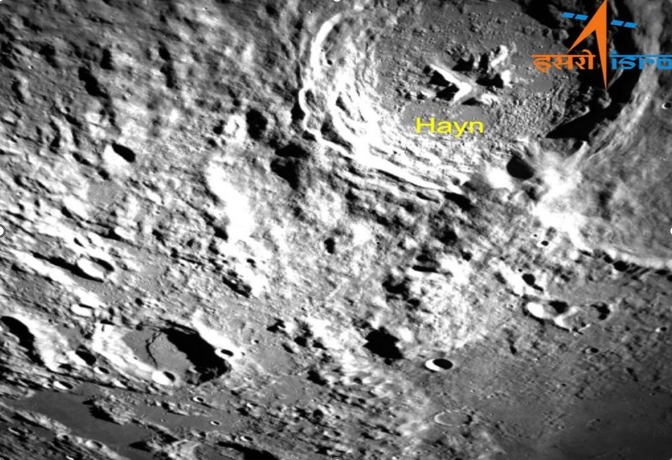By: Akshat Mittal

Credits: ISRO
The third lunar mission of India’s space agency, which is looking for a safe landing location on the little-known south pole, has published photographs of the far side of the Moon. The images were captured by Vikram, the lander for Chandrayaan-3, which started its last phase of the mission on Thursday. On August 23, the rover-carrying Vikram spacecraft is scheduled to touch down.
The images were taken one day after the Russian Luna-25 spacecraft crashed onto the Moon after losing control.The craft—Russia’s first lunar mission in almost 50 years—was supposed to be the first to touch down on the south pole, but it malfunctioned as it entered its pre-landing orbit.
The Chandrayaan-3 lander has begun mapping the landing region and capturing pictures with its “hazard detection and avoidance” camera, according to the Indian Space Research Organisation (Isro), which announced this on Monday morning. Chandrayaan-3 is scheduled to touch down on Wednesday at 18:04 local time (12:34 GMT).
ISRO noted that they will be helped “in locating a safe landing area — without boulders or deep trenches” by the black-and-white photographs transmitted by this camera. The lunar far side, which faces away from the Earth, is also referred to as “the dark side of the moon.”But this region of the Moon, which scientists believe may contain frozen water and priceless elements, is of great interest. India’s newest Moon mission transmits its initial images. The historic lunar mission of India gets launched successfully.
The lander module has successfully been lowered into a tighter orbit of the Moon (of 25 by 134 kilometers), according to Isro, and is now waiting for the lunar Sun-rise to land. India would be the first nation to touch down on the lunar south pole if Chandrayaan-3 is successful. In addition, it will join the United States, the former Soviet Union, and China as the only four nations to accomplish a soft landing on the Moon. Chandrayaan-3, the third mission in India’s lunar exploration program, is anticipated to build on the accomplishments of its predecessors.
It comes 15 years after the nation’s first Moon mission in 2008, which proved that the Moon has an atmosphere during the day and found water molecules on its dry surface.The July 2019 launch of Chandrayaan-2, which also included an orbiter, a lander, and a rover, was only partially successful.The lander-rover crashed upon touchdown because it was unable to make a soft landing, while the orbiter is still orbiting and researching the Moon.
India would be the first nation to touch down on the lunar south pole if Chandrayaan-3 is successful. In addition, it will join the United States, the former Soviet Union, and China as the only four nations to accomplish a soft landing on the Moon. Chandrayaan-3, the third mission in India’s lunar exploration program, is anticipated to build on the accomplishments of its predecessors. It comes 15 years after the nation’s first Moon mission in 2008, which proved that the Moon has an atmosphere during the day and found water molecules on its dry surface.
Launched in July 2019, Chandrayaan-2, India’s lunar mission, included an orbiter, lander, and rover. Despite the orbiter’s ongoing lunar observations, the lander-rover suffered a failed soft landing, resulting in a crash upon touchdown. While the mission was only partially successful, the orbiter continues to effectively study the Moon.











